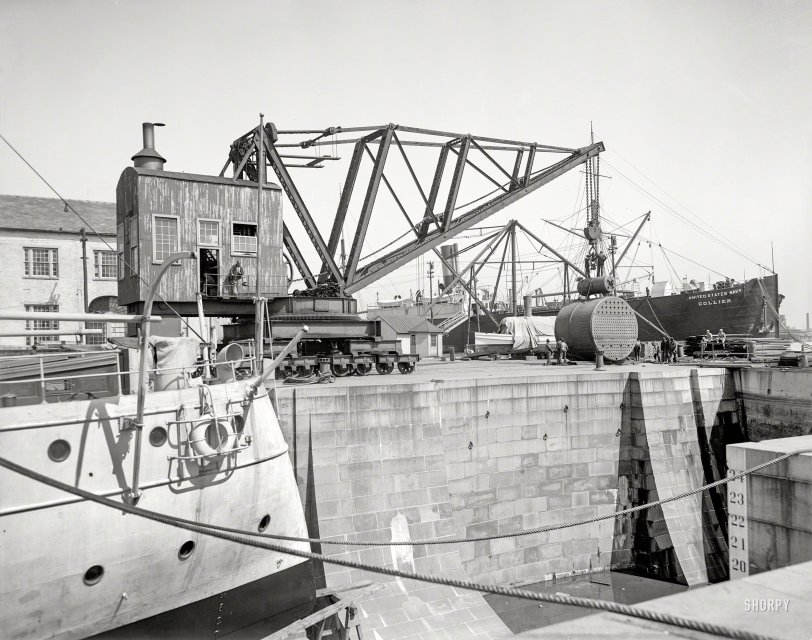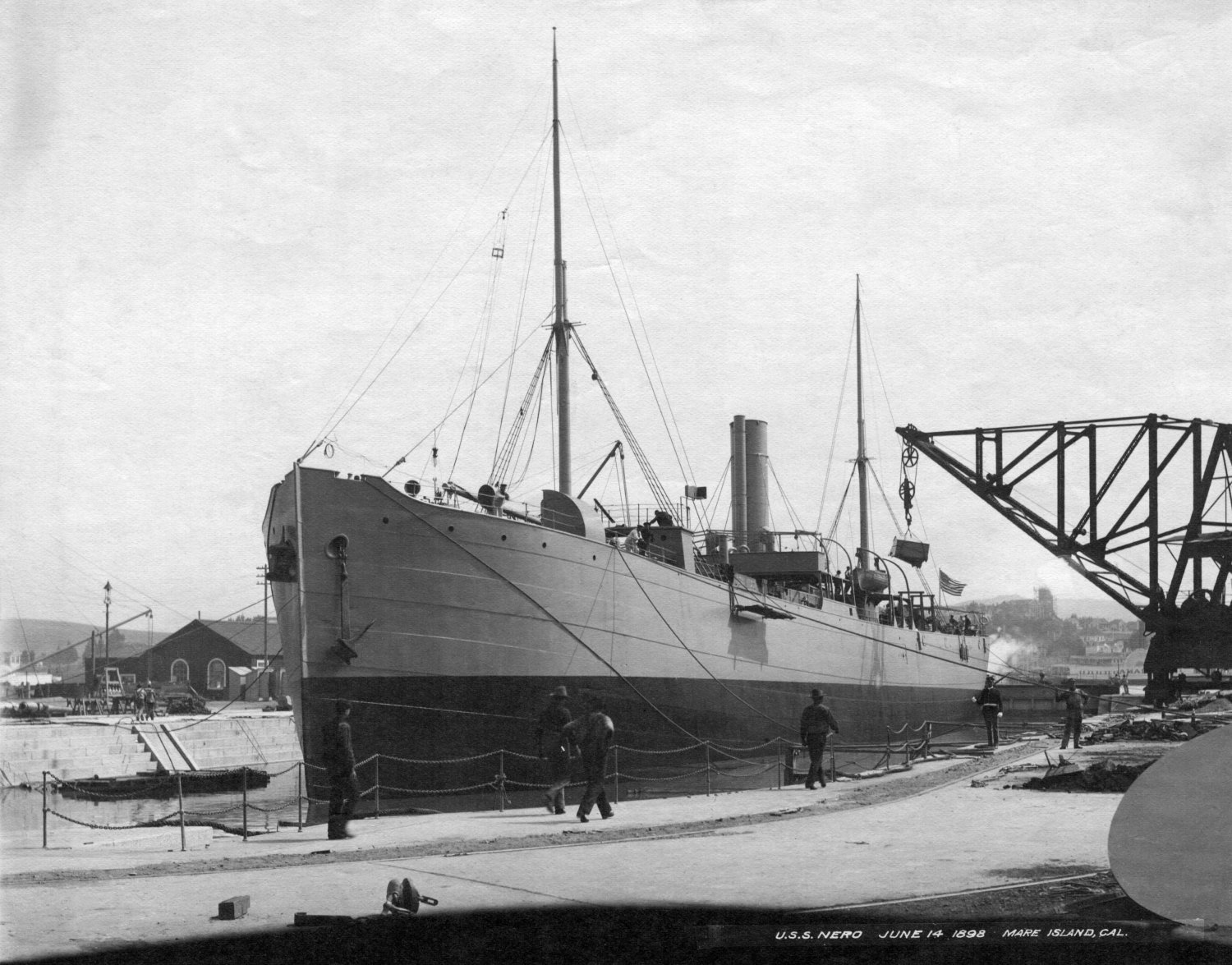


Framed or unframed, desk size to sofa size, printed by us in Arizona and Alabama since 2007. Explore now.
Shorpy is funded by you. Patreon contributors get an ad-free experience.
Learn more.

- Lost in Toyland
- And without gloves
- If I were a blindfolded time traveler
- Smoke Consumer Also Cooks
- Oh that stove!
- Possibly still there?
- What?!?
- $100 Reward
- Freeze Frame
- Texas Flyer wanted
- Just a Year Too Soon
- WWII -- Replacing men with women at the railroad crossing.
- Yes, Icing
- You kids drive me nuts!
- NOT An Easy Job
- I wonder
- Just add window boxes
- Icing Platform?
- Indiana Harbor Belt abides
- Freezing haze
- Corrections (for those who care)
- C&NW at Nelson
- Fallen Flags
- A dangerous job made worse
- Water Stop
- Passenger trains have right of way over freights?
- Coal
- Never ceases to amaze me.
- Still chuggin' (in model form)
- Great shot
Print Emporium
The Great Crane: 1905

Virginia circa 1905. "The Great Crane, Norfolk Navy Yard." 8x10 inch dry plate glass negative, Detroit Publishing Company. View full size.
Ring Thing
What is the caged item on what appears to be the stern of the ship in the drydock in the foreground? It looks too big to be a life ring and it appears to have a chain in the middle. It does appear to be able to be lowered out the bottom of the enclosure. Any old salts here who can shed some light on this?
The Name Game
To answer Zipp's question, the collier is the USS Nero, Collier #17 (later AC-17) 1895-1922. It was the former British SS Whitgift, one of nine British (Abarenda, Ajax, Caesar, Hannibal, Leonidas, Nanshan, Nero, Pompey, and Sterling), two American (Lebanon and Saturn) and one Norwegian (Brutus) built cargo ships with a single smokestack and two single masts acquired by the U.S. Navy in 1898 during the Spanish American war. The Nero was the only one with a raised hull island amidships (bridge island).

At the time this photo was taken the some of the ships had their name painted on the side just below the gunwale, right about where the boiler is blocking the view in the main photo.
The designation:
would later be replaced by:
and still later by:
All 12 ships went on to serve in WWI and one of them, the USS Hannibal, served for most of WWII before being intentionally grounded on a sand bar and used as an aerial bombing target.
More on the Nero can be found here, but the third picture down is actually of the USS Brutus.
Well, it's a pretty good crane, at least.
Looks big, and maybe it was, in its day.
Boiler and steam drum
Goats of Venus is correct: the smaller cylinder on top is the "steam drum" that collected steam from the boiler.
Although the internal design and efficiency of naval boilers changed dramatically after 1905 (well, obviously), the concept of a steam drum didn't. From the mid 1950s, here's an explanation of how a naval boiler works: https://www.youtube.com/watch?v=kKnF3Zl3-kU Skip ahead to 2:10 for a reference to the steam drum.
Collier's name is ... Collier?
Interesting choice of writing the ship's type on the bow instead of the ship's name. I've never seen this before. Now I wonder what was the name of it.
Cylinder On Top:
I would say the cylinder serves as a sort of "steam dome" or separator to prevent boiler water from being carried into the steam supply. That crane looks like a mechanical nightmare to operate. I see there are jack-screws to raise the boom. Wire rope design has not come into vogue thus the chain load line. Why all the kindling stowed at the boom pivot area? I'm sure the boiler was coal fired. Is this crane an early design of a "Whirley" crane?
Bearing Intuitions
I wonder if they used big bearings to hold the heavy load, or lots of small ones.
Boiler with?
The crane has a Scotch boiler on it's its hook, what would be the cylinder on top of the boiler proper? A steam reservoir or something to do with feedwater heating?
























On Shorpy:
Today’s Top 5